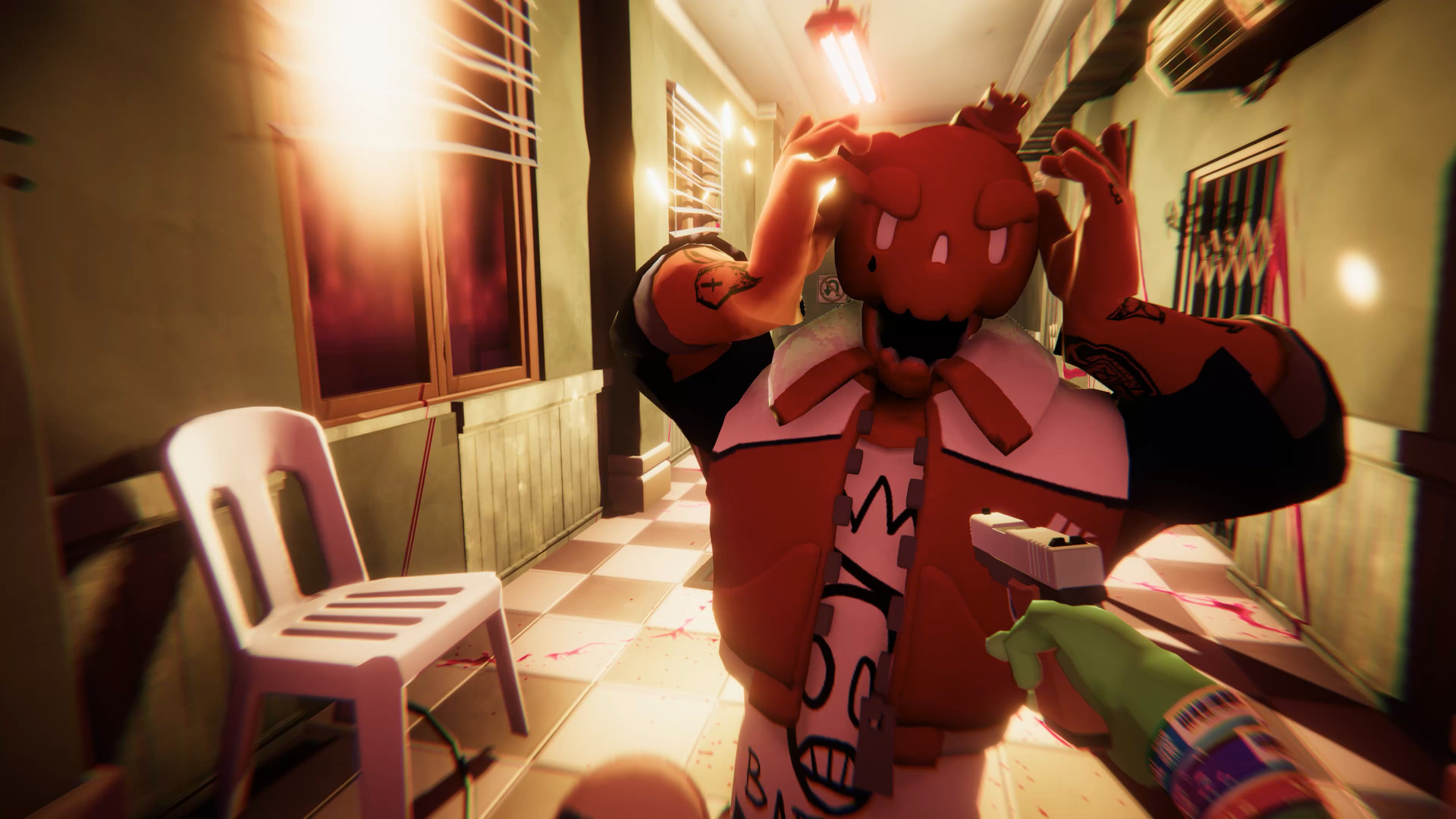Anger Foot Made Me Angry
It made me really angry.
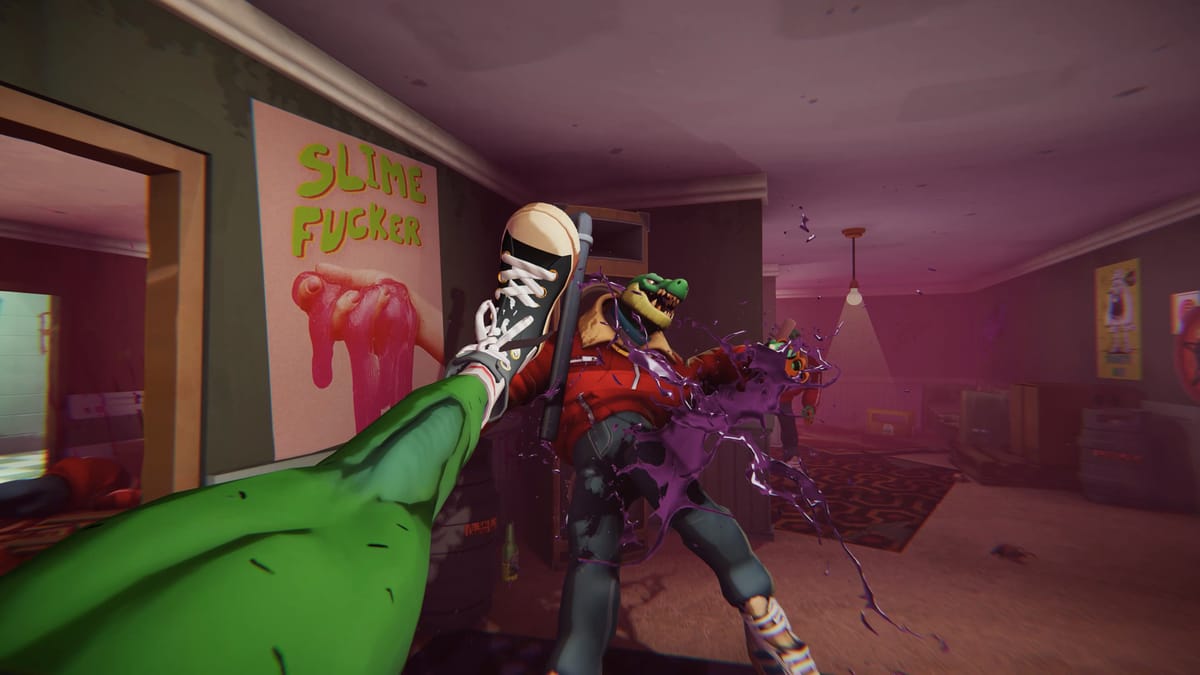
I was pretty pumped for Free Lives' new FPK (first-person-kicker) Anger Foot. It seemed like my kind of game: frenetic, shooter-y scrambles through aesthetic corridors adorned with ragdollian explosions and (of course) plenty of glorious kicking. If there's one praise I can give straight away is that the main gimmick never got old or boring – sacking a goon with the soles of my sneakers was always jolly good, exhilarating fun.
The trailers and demo led me to believe it would be a high-octane, door-smashing, easy-to-kill/easy-to-die experience that would elevate the game to stand on top of the Devolver Digital golden pedestal, alongside its fellow label-mate: Hotline Miami. My first impressions of the game were not compare-n-contrasts with Hotline Miami, but games journalists made this juxtaposition prevalent. The devs themselves have not hidden their admiration of Hotline Miami.
The comparisons write themselves too – both contain troves of unnamed goons that must be bashed and shot with frantic speed as a thumping techno soundtrack complements the ultraviolence. The differences seem superficial at first sight: Anger Foot moves the camera from an over-the-top perspective to a first-person view, putting you in the (literal) shoes of the titular Anger Foot.
Instead of the animal masks from Hotline Miami that grant you different boons such as extra ammo or lethal fists, Anger Foot offers all these wacky sneakers you can try on for size. Some can be quite useful, like the Holy Sandals, which grant a second chance at life, or downright silly like the Clown Shoes – they make honking noises, throw confetti fucking everywhere and send enemies flying through the air like deflated balloons.
Anger Foot has merit. I wouldn't consider it an amazing game, but I would at least call it an enjoyable experience – it's unafraid to be unabashedly juvenile and janky (to its benefit, as I have a pretty positive perception of jank). Despite my frustrations, I take my feet to the doors once more. There's an incredible rush when you complete a brutally difficult level by the skin of your teeth. I just think Hotline Miami is not just better designed, but it also has more to say – it has artistic eminence in the places where Anger Foot overflows in sardonicism.
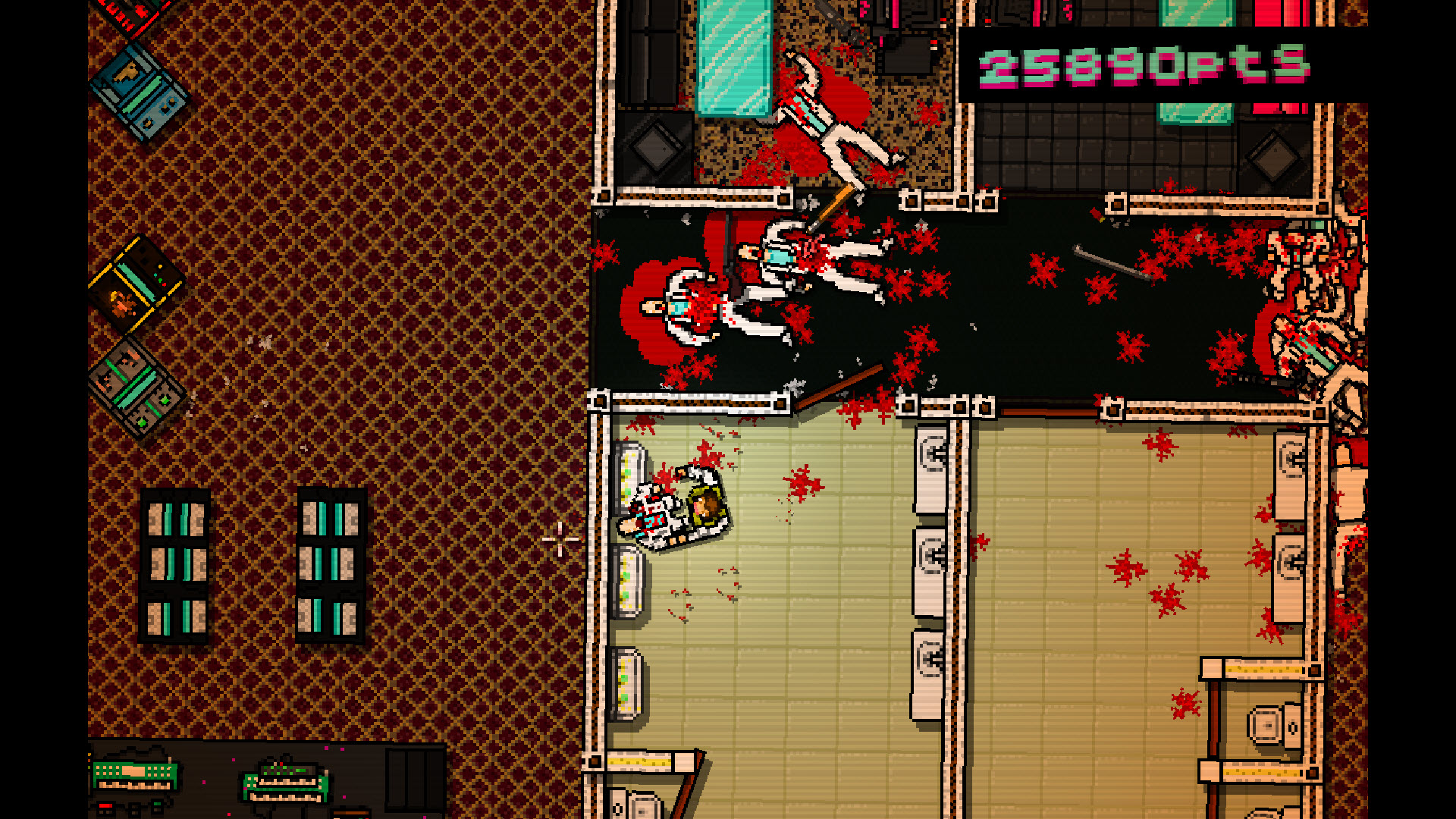
Hotline Miami is a very special game to me. I am continuously fascinated by its approach to violence and believe its one-hit-kill/one-hit-die combat has never been replicated as masterfully since (not even by its sequel). Whereas Anger Foot revels in the insanity of its stomping violence, Hotline Miami forces you to confront yourself on the glee and enjoyment you might feel from brutalizing pixelated, digital humans.
It's 1989 in the humidly warm city of Miami. A man named Jacket has been receiving cryptic messages on his answering machine. At one point, the requests become overt: a package is delivered to his residence with a rooster mask and a note, detailing instructions to recover a briefcase from the Russian mob using violence. Threats are made – Jacket adorns his animal mask and massacres the mobsters. He continues to receive vague voicemails directing him to the haunts and dwellings of the Russian mafia. He continues murdering bald goons with fists, knives, pipes, pistols – anything and everything he can get his hands on.
Allow me an attempt at recreating my experience of the first non-prelude level, "No Talk". I adorn Richard, the rooster mask, as it grants no advantage and I want to face these gangsters on equal footing – a fair hunt. A bombastic techno song booms and claps the sound waves, heightening the incoming carnage. I ambush the first mobster with a furiously fast fist, knocking him to the ground. I bash his head on the floor until his brains seep out. I steal his crowbar. I rush a guy in the bathroom with a solid WHACK. He crawls on the floor, slowly bleeding to death. This alerts a fellow Russian, who rushes to the bathroom. I exit the bathroom as he is about to enter and the swinging door knocks him off his feet. I bash his head until it's nothing but mush, I sneak down a corridor and notice a gun-carrying gangster. I kill him with a solid hit on the back of the head, take his shotgun and precisely gun down the last two enemies.
As soon as the last shot rings out, the baldy's intestines scattering on the floor, the drums and bass of the techno song suddenly stop – replaced by a somber, humming drone. I slowly make my way back to Jacket's Delorian and walk past the bloodied and gutted Russian mafiosos.
This sudden tonal shift feels like suddenly sobering up from a violent amphetamine high. The adrenaline rush of the fast-paced gameplay, the crunchy sound effects, the thumps and whams of the electronic soundtrack almost immediately get replaced by funereal reflection. The game wants you to feel bad about the fun you just had one-hit-killing these fictional humans. If not, it at least wants you to think about the violence you inflict in videogame settings – is the goring of fictional human beings in a consequence-free world enjoyable to you? The game straight-up asks you at the beginning of the story: "Do you enjoy hurting others?" Do you, dear reader?
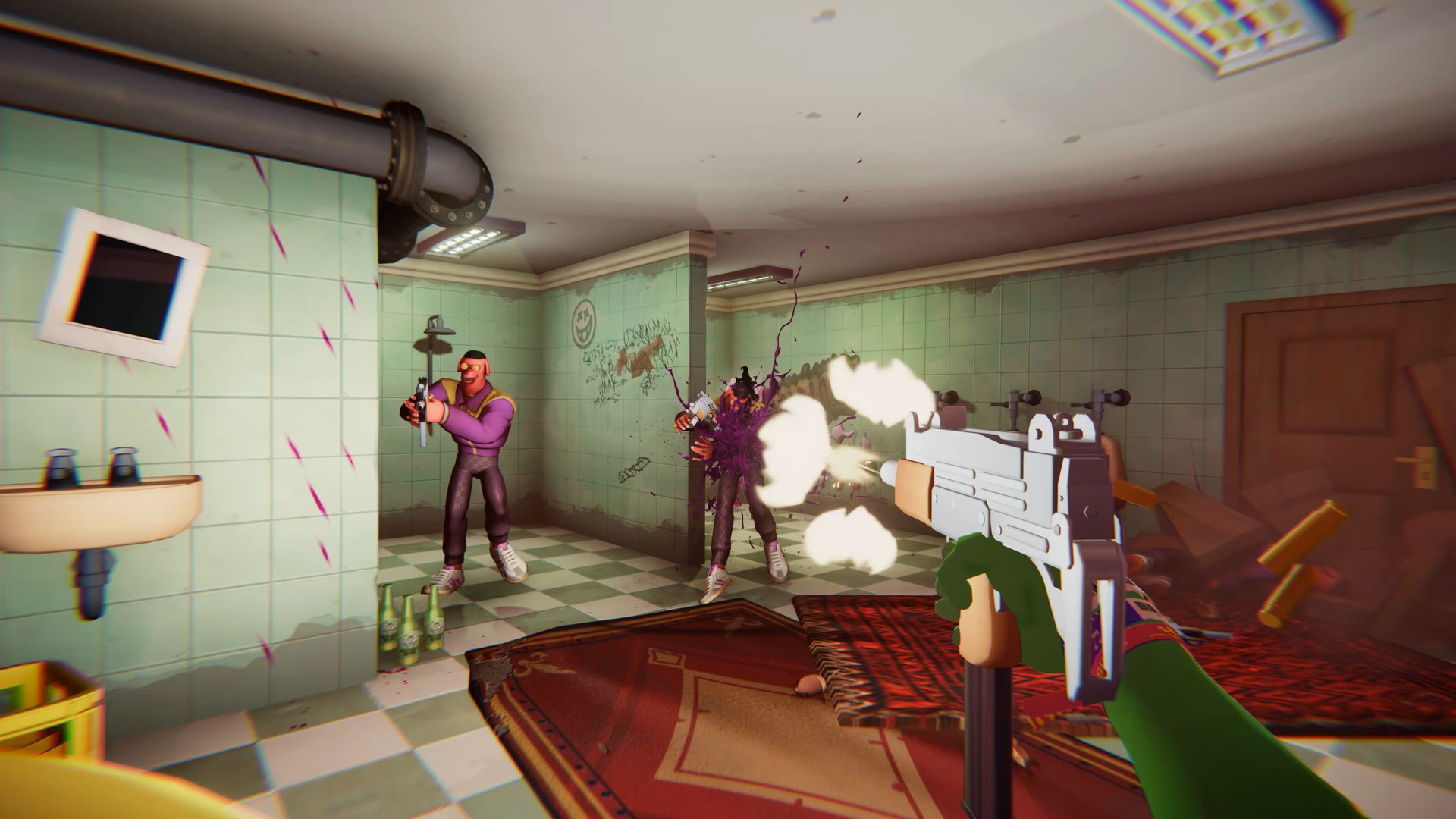
Anger Foot doesn't deal with such a heady contemplation on violence. It very explicitly wants you to have fun kicking and shooting unnamed goons. It wants you to enjoy hurting others. It helps that there are degrees of separation from the contemplation of violence – your enemies appear more like mascots and anthropomorphic animals rather than the living, breathing (albeit, heavily pixelated) mafiosos of Hotline Miami. The world of Anger Foot is cartoonishly violent, existing under all these layers of corny humor, style and sarcasm.
The premise is that you play as a sneaker-obsessed, angry motherfucker that resolves conflict via kicks and bullets. You must venture through Shit City (yes, that's the actual name of the setting: Shit City), a town where crime is law and violence is rampant. Your precious Preemo shoes got stolen by (bear with me here) four generic gangs: the Violence Gang, the Pollution Gang, the Business Gang and the Debauchery Gang (yes, those are the actual names, stay awake please).
In between the lightning-fast, door-ridden levels, you get some solace and breaths of fresh air. Some levels allow you to freely wander and talk to a collection of non-hostile NPCs with often humorous dialogue. Some of them even got a hearty chuckle from me.
Anger Foot is tomfoolery incarnate. Hence, when it's paired up with Hotline Miami so frequently, I feel like the comparisons are superficial at best. I would've loved Anger Foot more if these comparisons were non-existent. When directly contrasted with the features and game-feel of Hotline Miami, it lacks some vital quality-of-life additions.
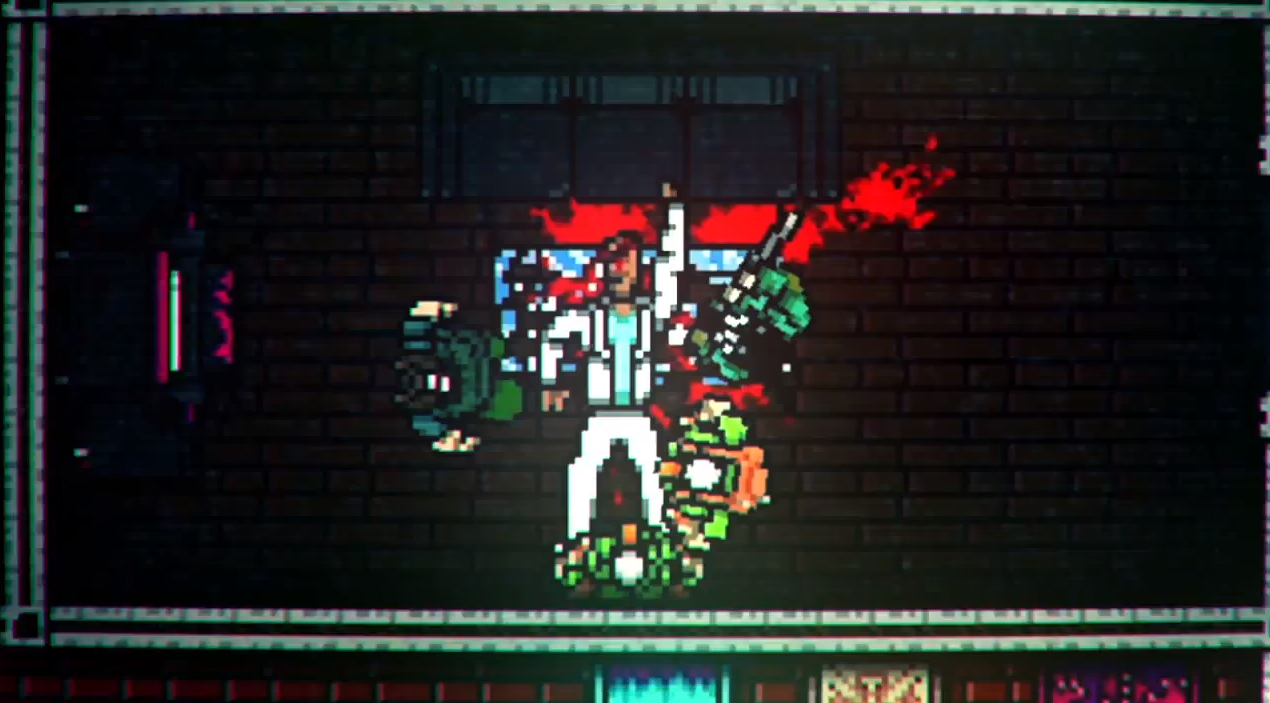
The trick of designing a game with such combat mechanics is to make failure a consequence of the player's mistakes or lack of skill. Hotline Miami 2: Wrong Number, also fails in this regard. I love Hotline Miami, but truly despise its sequel. While I like the narrative additions and its expansion of the xenophobic conspiracy that underlies the masked massacres, it failed at delivering the same feelings as the original.
The tight scope of its apartments and nightclubs is replaced with vastness. When the levels are this huge and open, it's very easy to get one shot by some unseen, gun-toting goon, which you can't even spot even by moving the camera around. This is the prevalent frustration I have with both Wrong Number and Anger Foot: many times, death came not as a consequence of my inadequacy, but by poor level design decisions.
To further salt the wound, Hotline Miami introduces two very easy mechanics that make failure more tolerable – two tiny fucking things Anger Foot couldn't add, for some odd reason:
1) Hotline Miami has checkpoints. While Anger Foot's levels can be completed in a New York Minute, it was so devastating to get killed by some unseen goon as I was staring at the exit, only to have to restart the entire level from the top. Hotline Miami's levels can also be easily beaten in a manner of seconds once you know what you're doing, but having to go back from the beginning would've seriously ruined the flow of the gameplay, like it does in Anger Foot.
2) Hotline Miami has a quick one-button, one-second restart. This makes it so death is bearable – as soon as you're whacked and killed with a bat, you can quickly revive from a checkpoint and have at it again. Death in Anger Foot lasts an agonizing 3 seconds (yes, I counted). After multiple deaths, those 3 seconds of lizards twerking on your corpse are aggravating, especially considering all I want is to get right back at the action.
Furthermore, Hotline Miami succeeds at rewarding you for risky and frenetic actions. I found that the less I planned my approach, the more gun-ho I was, the easier the levels got (plus you get some sweet multipliers for your total score). Anger Foot wants you to play through the levels in a similarly quick and frantic way, but more often than not taking it slow and steady made the game much more bearable, as it allows you to analyze threats and spot cheeky enemies.
Anger Foot lives under this contradiction – in between its intended playstyle and the more convenient one – which defeats the purpose of a fast, action-packed game.
I had to stop playing Anger Foot, and once I picked up Hotline Miami again I found myself enjoying it way more despite having already beaten it multiple times. Anger Foot caused a gaming faux pas – rather than have me appreciate it on its own terms, it made me realize there's way better games that deliver its intended gameplay...and have more to say philosophically!
Anger Foot made me very, very, very angry, and I unfortunately can't fully recommend it unless you're an adrenaline junkie going through some serious withdrawal. Even then, there are plenty of other activities that could get your heart pumping.
Stylistically, Hotline Miami and Anger Foot are very different games. The comparisons to the masterpiece that is Hotline Miami, unfortunately, don't give Anger Foot any leg to stand on. Disappointingly, Anger Foot takes the Hotline Miami formula and desecrates it quite starkly – it learned all the wrong lessons from Dennaton Games' seminal title.
